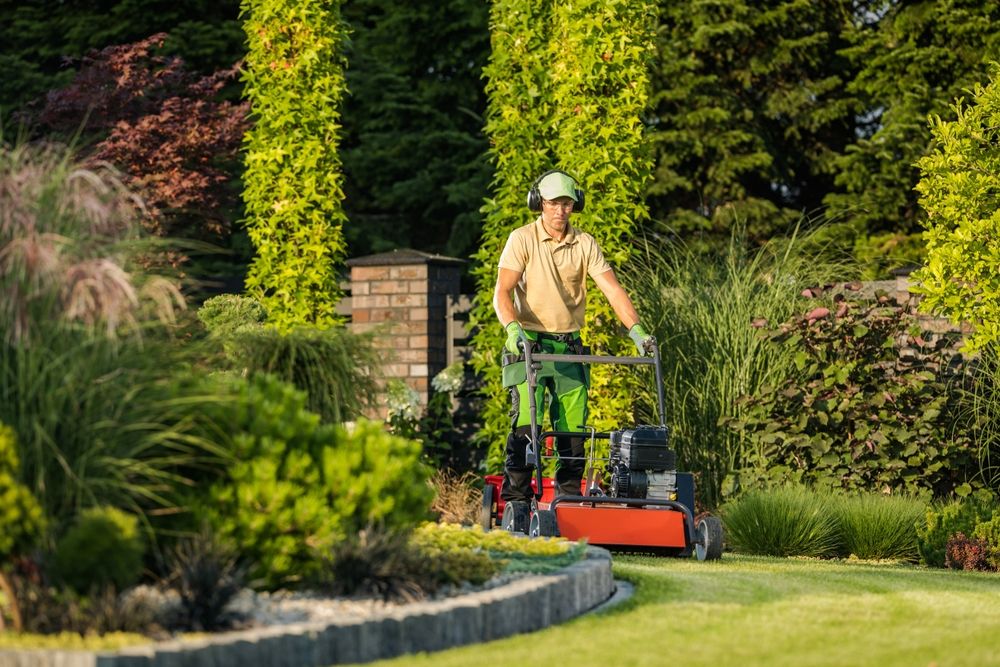Having a beautiful yard is something many homeowners dream of. A lush green lawn, vibrant flower beds, and tidy walkways can boost your home’s curb appeal and create a relaxing outdoor space. But those picturesque landscapes often come with a hefty price tag. From professional landscaping services to costly plants, fertilizers, and water bills, lawn care can quickly strain your budget.
The good news is you can still enjoy a gorgeous yard without overspending. With some planning, a little DIY effort, and smarter choices, you can dramatically cut the cost of landscaping and lawn maintenance. Here’s how.
Choose Low-Maintenance Plants and Landscaping
One of the biggest mistakes homeowners make is filling their yard with plants that demand constant care, special fertilizers, or heavy watering.
-
Opt for native plants that are well adapted to your climate. They generally need less water and resist local pests better.
-
Use perennial flowers and shrubs instead of annuals. Perennials come back year after year, saving you money on replanting.
-
Reduce the size of your lawn. Replace some grass with mulch beds, decorative gravel, or ground covers like creeping thyme, which require far less mowing and watering.
Choosing the right plants from the start cuts down your long-term costs.
Do More of the Work Yourself
Hiring landscapers or lawn care services is convenient but expensive. Basic tasks like mowing, edging, pruning, and planting are easy to learn and save you hundreds or even thousands a year.
-
Invest in a good quality lawn mower and basic garden tools.
-
Watch online tutorials to pick up skills like edging flower beds, trimming hedges, or laying down mulch.
Even if you hire pros for occasional big projects, handling routine upkeep yourself makes a huge difference.
Water Smarter, Not More
Water is often the biggest hidden cost in landscaping—especially if you live in a dry climate or have a large lawn.
-
Water early in the morning or in the evening to reduce evaporation.
-
Use soaker hoses or drip irrigation instead of sprinklers, which target roots directly and waste less water.
-
Group plants with similar water needs together so you’re not overwatering some while underwatering others.
Also, consider installing a rain barrel to collect free water for your garden.
Mulch to Save on Water and Weeds
Mulch is one of the simplest ways to save money in the long run.
-
A layer of mulch around your plants keeps the soil moist longer, meaning you’ll water less.
-
It also suppresses weeds, cutting down on herbicide costs or hours spent pulling weeds by hand.
Mulch comes in many affordable options like shredded bark or pine straw—and even free if you use grass clippings or leaves.
Mow Properly and Keep Your Grass Healthy
Many homeowners cut their grass too short, thinking it reduces mowing frequency. But short grass dries out faster and is more prone to weeds.
-
Keep your mower blade set to the highest recommended setting for your grass type.
-
Leave grass clippings on the lawn—they decompose and return nutrients to the soil, reducing fertilizer needs.
Healthy, thick grass naturally chokes out weeds, saving money on treatments.
Start Plants From Seed or Cuttings
Buying mature plants from a nursery is convenient but pricey.
-
Start flowers, vegetables, and even many shrubs from seed. A packet of seeds costs a fraction of nursery prices.
ADVERTISEMENT -
Take cuttings from existing plants. Many perennials and shrubs propagate easily in water or moist soil.
It takes a little patience, but you’ll grow your landscape for pennies on the dollar.
Time Your Purchases for Sales
Garden centers often discount plants, soil, and tools at the end of the season.
-
Buy perennials in late summer or fall when prices drop. They’ll still have time to establish roots before winter.
-
Look for clearance deals on tools, pots, and patio items in late fall.
Stocking up off-season means big savings.
Build or Fix Hardscapes Yourself
Walkways, patios, and raised beds add beauty and functionality but can be very costly to have installed professionally.
-
Simple gravel paths or stepping stones are affordable DIY projects.
-
Build raised garden beds from recycled wood pallets or leftover lumber instead of buying expensive kits.
There are countless online guides for budget-friendly outdoor projects, making it easier than ever to tackle these tasks yourself.
Use Free or Cheap Compost and Soil Amendments
Good soil is the foundation of healthy landscaping, but you don’t have to buy pricey bags of compost.
-
Start a small compost pile with kitchen scraps and yard waste.
-
Check with your local municipality—many cities offer free compost or mulch from collected yard debris.
Healthy soil means less money spent on fertilizers and fewer plant replacements.
Be Strategic With Professional Help
Sometimes it makes sense to hire experts, especially for major grading, tree removal, or hardscape installations. But you can still save by prepping the area yourself.
-
Remove old plants, rocks, or debris before the landscapers arrive.
-
Handle planting or finishing touches once the heavy work is done.
Being flexible on timing also helps. Landscapers often offer discounts during slower seasons.
Keep Up With Maintenance to Avoid Big Costs Later
Neglect is expensive. Letting weeds take over, ignoring pests, or forgetting to water new plantings means more money spent fixing problems.
-
Walk your yard weekly to spot issues early.
-
Pull small weeds before they go to seed.
-
Prune damaged branches to keep trees and shrubs healthy.
A little ongoing care is always cheaper than replacing dead plants or repairing damage.
A stunning yard doesn’t have to break the bank. By choosing the right plants, doing more tasks yourself, watering wisely, and making small ongoing efforts, you can cut your landscaping and lawn care costs dramatically.
Over time, these smart habits build a landscape that’s not only beautiful and enjoyable but also much kinder to your budget. So roll up your sleeves, get creative, and watch your outdoor space—and your savings—grow.

